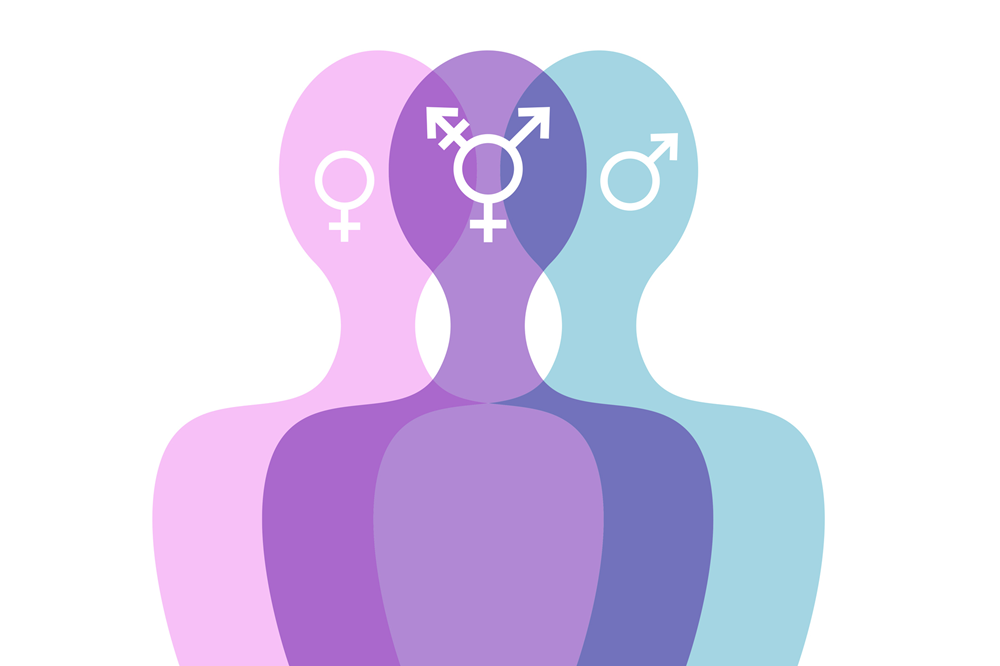
Gender identity, a deeply personal sense of self, is increasingly understood as a spectrum that extends far beyond traditional male and female classifications. Non-binary identities, often categorized under the broader transgender umbrella, represent individuals who identify with a gender different from the sex assigned at birth, or whose gender is not exclusively male or female. This diverse group may perceive their gender as an intermediate state, as multiple genders, as no gender at all, or as an identity that shifts over time.
It is important to understand that gender identity is distinct from sexual or romantic orientation; non-binary individuals have a wide range of sexual orientations, just like people of any other gender identity. Their gender expression also varies greatly, and some may choose to reject gender identity entirely. For those experiencing gender dysphoria, gender-affirming care, including medical interventions like hormone replacement therapy or surgery, can be a vital step towards alleviating mental distress, though not all non-binary individuals pursue such care.
This exploration delves into the nuanced world of non-binary identities, from their foundational definitions and historical emergence to the specific forms of self-identification and the evolving language used to describe these experiences. It aims to provide a clear and factual overview of what it means to be non-binary, drawing directly from established terminologies and documented experiences.

1. **Defining Non-Binary Identities**Non-binary, or genderqueer, gender identities are those that exist outside the traditional male/female gender binary. While non-binary people typically identify with a gender different from their sex assigned at birth, making them often fall under the transgender umbrella, some individuals within this group do not consider themselves transgender. This highlights the diversity within the non-binary community itself.
These identities can manifest in several ways: identifying as an intermediate or separate third gender, identifying with more than one gender, having no gender, or experiencing a fluctuating gender identity. The concept emphasizes that gender is not necessarily fixed or limited to two poles. Non-binary individuals collectively represent a wide spectrum of gender diversity, challenging conventional norms.

2. **”Genderqueer” and Other Foundational Terms**The term “genderqueer” first emerged in queer zines during the 1980s, preceding the more widely adopted “non-binary.” It gained significant traction in the 1990s, notably through the work of activists like Riki Anne Wilchins, who used it to describe individuals who deviated from traditional gender norms in essays and autobiographies. Its dissemination expanded further with the 2002 anthology, “Genderqueer: Voices Beyond the Sexual Binary.”
The rise of the internet and public identification by celebrities in the 2010s further brought “genderqueer” into mainstream awareness. It serves as both an umbrella term for various non-binary identities and an adjective describing those who challenge or diverge from conventional gender distinctions. “Enby,” derived from the acronym NB for non-binary, is another commonly used term within the community, offering a colloquial and affirming descriptor.

3. **Distinguishing Non-Binary from Intersex**It is crucial to understand that being non-binary is not synonymous with being intersex. Intersex refers to individuals born with variations in sex characteristics, including chromosomes, gonads, or genitals, that do not fit typical definitions of male or female. Most intersex people identify as either men or women, aligning with binary genders.
However, a segment of the intersex population does identify as non-binary. A 2017 national UK survey of intersex respondents found that 25% identified as non-binary, while others identified as non-binary and genderfluid, or non-binary men or women. This illustrates that while distinct, there can be overlap in identities, but one does not define the other.

4. **Agender: The Absence of Gender**Agender individuals are those who identify as having no gender at all. This identity is also sometimes referred to as genderless, gender-free, non-gendered, or ungendered. It represents a specific point on the gender spectrum, characterized by a lack of internal gender identity.
Scholar Finn Enke notes that not all agender individuals necessarily self-identify as transgender, further emphasizing the distinct nature of this identity. While there is no universally accepted set of pronouns, singular ‘they/them’ is commonly used, though not as a default for all. Both “Agender” and “Neutrois” were among the custom gender options introduced by platforms like Facebook and OkCupid, marking increased recognition.

5. **Bigender and Trigender: Multiplicity of Identities**Bigender individuals identify with two distinct gender identities. These two genders can manifest either simultaneously or may fluctuate between masculine and feminine expressions depending on the context or time. This identity differs from genderfluidity, where the gender experience is more of a continuous range rather than fixed states.
The American Psychological Association recognizes bigender identity as part of the broader transgender category. Surveys, including a 1999 San Francisco Department of Public Health survey and a 2016 Harris poll, have indicated the presence of bigender identification, particularly among younger generations. Extending this concept, trigender people are those who shift among male, female, and a third gender.

6. **Demigender: Partial Gender Connection**Individuals who identify as demigender feel a partial connection to one specific gender while also identifying with another gender or with no gender at all (agender). This identity acknowledges a nuanced relationship with gender, where one might feel partly aligned with a binary gender but not entirely.
Subcategories of demigender include terms such as demi-boy or demi-man, for those who partially identify as male, and demi-girl, for those who are partly female and partly non-binary. Furthermore, demiflux individuals experience a stable non-binary identity, but with varying intensities of other gender identities, illustrating the intricate and personal nature of these self-identifications.




